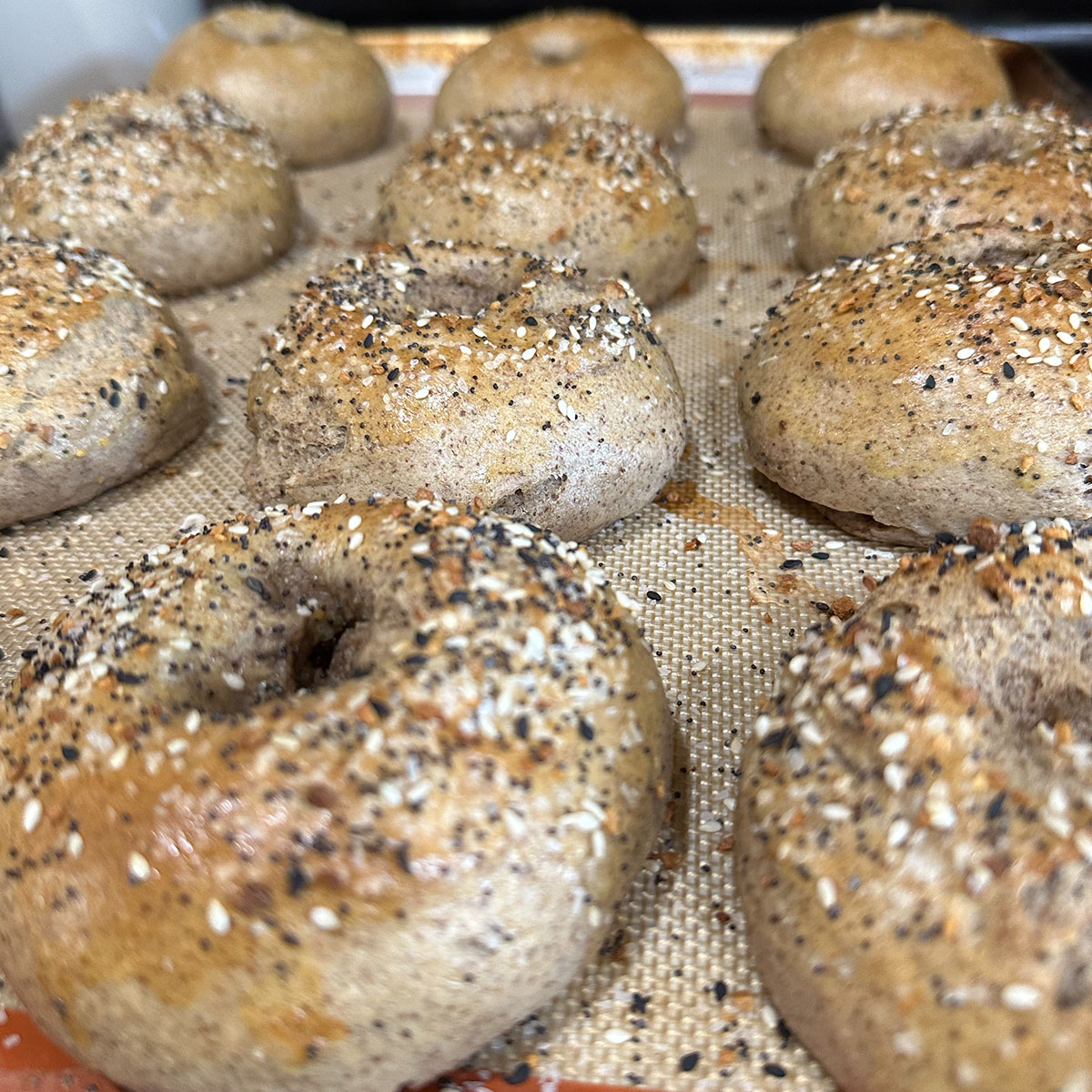How to Store Gluten-Free Bagels

Let’s Talk About the Sad, Soggy Reality of Gluten-Free Bagels
You buy a gluten-free bagel. Maybe it looks promising. Maybe you even got your hopes up. You bring it home, pop it in the fridge to “keep it fresh,” and a day later it’s somehow both rock-hard and spongey. That’s talent. The bad kind.
Gluten-free baked goods don’t behave like regular bread. They dry out faster, get stale in weird ways, and if you don’t store them right, they can turn on you. Fast.
But don’t worry. You’re about to learn how to store your gluten-free bagels like a pro. And no, the answer is not “leave it on the counter in a plastic bag until it cries for help.”
Why Gluten-Free Bagels Need Special Treatment
Gluten is what gives traditional bread its elasticity and moisture retention. Without it, most gluten-free bread products are more fragile, dry out faster, and go stale on a tight schedule.
Your storage game needs to be stronger. Especially if you don’t want your bagel to taste like something that escaped a museum exhibit.
Rule #1: Skip the Fridge. Seriously.
The refrigerator might seem like a safe space for food, but it’s basically a moisture vacuum. Putting gluten-free bagels in the fridge is a fast track to dry, dense sadness.
Do this instead:
- Eat them fresh (obviously the best choice)
- Freeze them immediately if you’re not eating them in 24 hours
Rule #2: Freeze Like a Genius
Freezing gluten-free bagels is actually a great idea—if you do it right. It locks in moisture and stops the clock on staleness.
Here’s how to do it:
- Slice before freezing. Don’t freeze a whole bagel unless you enjoy chiseling your breakfast apart.
- Use a freezer-safe bag. No sandwich bags with flimsy zippers. Use the heavy-duty stuff.
- Suck the air out. Vacuum seal if you’re fancy. Press and roll if you’re not. Just don’t let them hang out with air for long.
- Label the date. So you don’t discover a mystery bagel five months from now and question your life choices.
Rule #3: Reheat Like You Mean It
When you’re ready to eat your glorious frozen gluten-free bagel, don’t wing it. Do it with care.
Best method:
- Let it thaw at room temp for 10–15 minutes (or overnight in a sealed container).
- Toast until golden and crisp on the edges.
- Avoid the microwave unless you want a steamy, chewy sponge.
If you must microwave, do it low and slow. Then toast. Microwaving and walking away is a betrayal we can’t support.
Why Our Bagels Store Better Than the Rest
Most gluten-free bagels fall apart when frozen. Ours don’t.
Because we use:
- Organic, GMO-free ingredients that hold up better
- A texture that’s chewy but not brittle
- Real testing on real humans who freeze their food like adults with jobs and lives
We freeze-test every batch, because we know most people aren’t baking fresh bagels at 6 a.m.
Final Thoughts (and a Toast)
You shouldn’t have to settle for freezer-burned bread that tastes like regret. With a little prep, gluten-free bagels can taste amazing even after weeks in the freezer. Just store them smart, toast them right, and for the love of carbs, don’t put them in the fridge.
Stock up on freezer-friendly bagels here Your future self will thank you. With cream cheese.
Latest Articles
Gluten-free lunch ideas for busy days
No more sad salads. Get fast, satisfying gluten-free lunch ideas for home, work, or on the go. Paleo-friendly and freezer-ready options included.
Read MoreStock your freezer with the paleo bagels you’ve been missing
Stock your freezer with paleo breakfast bagels that toast up perfectly. Grain-free, gluten-free, and delivered frozen nationwide.
Read MoreAre Paleo baked goods healthy?
Learn what makes paleo baked goods a healthier choice. No grains, no gluten, just nutrient-dense ingredients that taste amazing.
Read More
